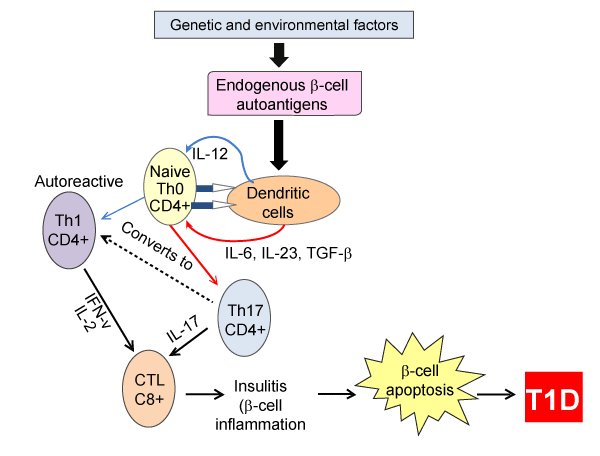
Dendritic cells process endogenous β-cell autoantigens such as insulin and GAD and transfer peptide fragments together with the MHC class II molecules to the surface of the cell. Thus, the autoantigen is presented to naïve T helper cells (Th0). Dendritic cells (DC) secrete the inflammatory cytokine interleukin-12 (IL-12), which stimulates the morphogenesis of Th0 into autoreactive T helper 1 (Th1) cells. Autoreactive Th1 cells secrete interferon gamma (INF-γ) and interleukin-2 (IL-2) that stimulates cytotoxic lymphocytes (CTL) to secrete inflammatory cytokines that cause pancreatic islet inflammation (insulitis) and β-cell apoptosis. DCs may secrete inflammatory cytokines IL-6 and IL-23 that stimulate naïve Th0 cell development into Th17 effector T Cells producing inflammatory IL-17. It has been proposed that Th17 cells contribute to the immunological pathology of T1D by increasing the ratio between T effectors and Tregs, converting to Th1 phenotype, or stimulating CTLs. Because pancreatic β-cells are the only ones that produce insulin, there is a progressive decrease in the production of this hormone and subsequent increase in blood sugar (hyperglycemia) resulting in T1D.